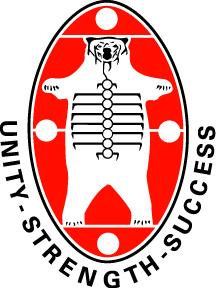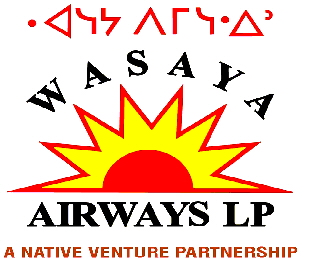Saugeen First Nation is an Ojibway First Nation band located along the Saugeen River and Bruce Peninsula in Ontario, Canada. The band states that their legal name is the "Chippewas of Saugeen". Organized in the mid-1970s, Saugeen First Nation is the primary "political successor apparent" to the Chippewas of Saugeen Ojibway Territory; the other First Nation that is a part of Chippewas of Saugeen Ojibway Territory is Cape Croker. The Ojibway are of the Algonquian languages family. The First Nation consist of four reserves: Chief's Point 28, Saugeen 29, Saugeen Hunting Grounds 60A, and Saugeen and Cape Croker Fishing Islands 1.
First Nations in Ontario constitute many nations. Common First Nations ethnicities in the province include the Anishinaabe, Haudenosaunee, and the Cree. In southern portions of this province, there are reserves of the Mohawk, Cayuga, Onondaga, Oneida, Seneca and Tuscarora.
CIDE-FM is a Canadian First Nations radio station belonging to the Wawatay Native Communications Society, broadcasting at 91.9 FM in Sioux Lookout, Ontario. The station broadcasts distance education and informational programming through the Northern Nishnawbe Education Council. CIDE-FM has an extensive network of rebroadcasters throughout Northwestern Ontario.

The Oji-Cree are a First Nation in the Canadian provinces of Ontario and Manitoba, residing in a narrow band extending from the Missinaibi River region in Northeastern Ontario at the east to Lake Winnipeg at the west.
Mishkeegogamang First Nation is an Ojibway band government in the Canadian province of Ontario. Until 1993, the band was called the Osnaburgh First Nation, with various settlements at times being called New Osnaburgh, Osnaburgh House, or Osnaburgh.
Wapekeka First Nation is a First Nation band government in the Canadian province of Ontario. An Oji-Cree community in the Kenora District, the community is located approximately 450 kilometres northeast of Sioux Lookout. In January, 2008, the total registered population was 375, of which the on-reserve population was 355.
The Saugeen Ojibway Nation Territory, also known as Saugeen Ojibway Nation, SON and the Chippewas of Saugeen Ojibway Territory, is the name applied to Chippewas of Nawash Unceded First Nation and Saugeen First Nation as a collective, represented by a joint council. The collective First Nations are Ojibway (Anishinaabe) peoples located on the eastern shores of Lake Huron on the Bruce Peninsula in Ontario, Canada. Though predominantly Ojibway, due to large influx of refugees from the south and west after the War of 1812, the descendants of the Chippewas of Saugeen Ojibway Territory also have ancestry traced to Odawa and Potawatomi peoples.
Cat Lake First Nation is an Ojibway First Nation reserve approximately 180 kilometres northwest of Sioux Lookout in northwestern Ontario, Canada, located on the central north shore of Cat Lake. As of November 2007, their total registered population was 612 people, of which their on-reserve population was 497.

NAC Air was a Canadian regional airline that began operations in 2000. Its main base was at the Thunder Bay International Airport. NAC Air was a 100% First Nations-owned company, owned by the communities of Eabametoong, Neskantaga, Webequie, Sachigo Lake, and Sandy Lake
The Northern Ontario Resource Trail (NORD) is the designation of two mainly gravel roads in the Canadian province of Ontario. One road travels north from Pickle Lake to the northern shore of Windigo Lake. The second road travels north from Nankina to Marten Falls. Both link several winter roads and ice roads that serve communities in extreme Northern Ontario with the provincial highway system. The first 60 km (37 mi) of the Pickle Lake–Windigo Lake Road, as far as the Otoskwin River, also held the tertiary highway designation of Highway 808 within the provincial highway system from 1966 to 1983.

Bearskin Lake First Nation is an Oji-Cree First Nation reserve in Kenora District, Ontario, Canada, located 425 kilometres (264 mi) north of Sioux Lookout. Bearskin First Nation's total registered population as of March 2014 was 900, of which their on-reserve population was 461.

Nishnawbe Aski Nation is a political organization representing 49 First Nation communities across Treaty 9 and Treaty 5 areas of Northern Ontario, Canada. Re-organized to its present form in 1981, NAN's original objective was "to represent the social and economic aspirations of our people at all levels of government in Canada and Ontario until such time as real effective action is taken to remedy our problems."
McDowell Lake First Nation is a small Oji-Cree First Nation band government located in Northern Ontario, located approximately 155 km northeast of Red Lake, Ontario, Canada, on the central western shore of McDowell Lake. As of December, 2007, their total registered population was 52. It is part of the Keewaytinook Okimakanak Council and the Nishnawbe Aski Nation.
The Muskrat Dam Lake First Nation is an Oji-Cree First Nation band government in Northern Ontario. They reside on the 1,939.7 hectares Muskrat Dam Lake reserve, located on Muskrat Dam Lake in the Kenora District. The community of Muskrat Dam, Ontario, is located on this reserve. In June 2008, their total registered population was 387 people, of which their on-reserve population was around 195.
The Ojibway Nation of Saugeen is an Ojibwa First Nation in the Canadian province of Ontario. The Nation is located in the Thunder Bay District, approximately 20 kilometres northwest of Savant Lake. In December, 2007, its total registered population was 206, of which the on-reserve population was 72. The community maintains strong ties with Mishkeegogamang First Nation
Sachigo Lake First Nation is an Oji-Cree First Nation band government in Unorganized Kenora District in Northwestern Ontario, Canada. It is located on Sachigo Lake, part of the Sachigo River system and Hudson Bay drainage basin, approximately 425 kilometres (264 mi) north of the town of Sioux Lookout. As of September 2011, the First Nation had a registered population of 814 people, of which the on-reserve population was 443.

Wasaya Airways LP is a First Nations owned domestic airline with its headquarters in Thunder Bay, Ontario, Canada. Its main hubs are the Thunder Bay International Airport and the Sioux Lookout Airport; however, it also offers a charter and cargo service from a base in Red Lake Airport and Pickle Lake Airport. In 2003, Wasaya Airways bought the rights to serve remote First Nations communities from Bearskin Airlines. The airline also supplies food, clothing, hardware and other various supplies to 25 remote communities in Ontario.

North Star Air is a Canadian charter, passenger and cargo airline headquartered in Thunder Bay, Ontario, with secondary passenger hub in Sioux Lookout, Ontario, and cargo hubs located in Pickle Lake, Red Lake, Kapuskasing and Thompson, Manitoba. The majority of destinations served are First Nations communities, with regular service to 18 airports under "Flex Flight Passenger Service", and other regional destinations under an on-demand basis. Founded in 1997 as a floatplane operator with two DHC-2 Beaver aircraft based in Pickle Lake, the airline has grown over the years and came under new ownership in 2012. In 2015 Cargo North and North Star Air merged under the North Star banner.

The minister of Indigenous services is a minister of the Crown in the Canadian Cabinet. The minister is responsible for Indigenous Services Canada (ISC), the department of the Government of Canada which delivers federal government services to Indigenous peoples.